Trees that Count
4 July 2019Another 6000 trees being planted thanks to trees that count plus the restoration of Motukakaho a 200 acre island in the Waikato river delta. Home to rare wetland birds and whitebait spawning habitat.
Another 6000 trees being planted thanks to trees that count plus the restoration of Motukakaho a 200 acre island in the Waikato river delta. Home to rare wetland birds and whitebait spawning habitat.
On February 2 it was World Wetlands Day ... Newshub paid us a visit to have a korero:
https://www.newshub.co.nz/home/rural/2019/02/revealed-southland-wetlands-are-vanishing.html
“Caring for the land is part and parcel of being a farmer. I like the fact that, on my farm, we’ve got native birds like kererū, tūī, we even had a kākā turn up. So it’s not just a boring square piece of land without any room for diversity, and I think that’s pretty special,” says Stu Muir.
Hamish McKay talks to Stu Muir to dig a little deeper into how today’s farmers are looking after our waterways.
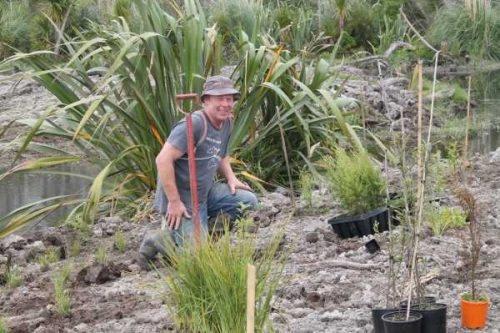
Mangati stream located south-west of Pukekohe has been on the backyard of our family farm for more than five generations. A stream which flows from the Waikato River was once thriving and flourishing in an abundance of native fish and bird life.
Check it out here to see more of what the bridge will allow better access to: https://www.waikatoriver.org.nz/project-stories/inanga-revival-stu-muir-family-mangati-stream-restoration-project/
Check out this video of progress that we've made on installing more boardwalks:
https://www.facebook.com/stu.muir.9/videos/10216457942989129/
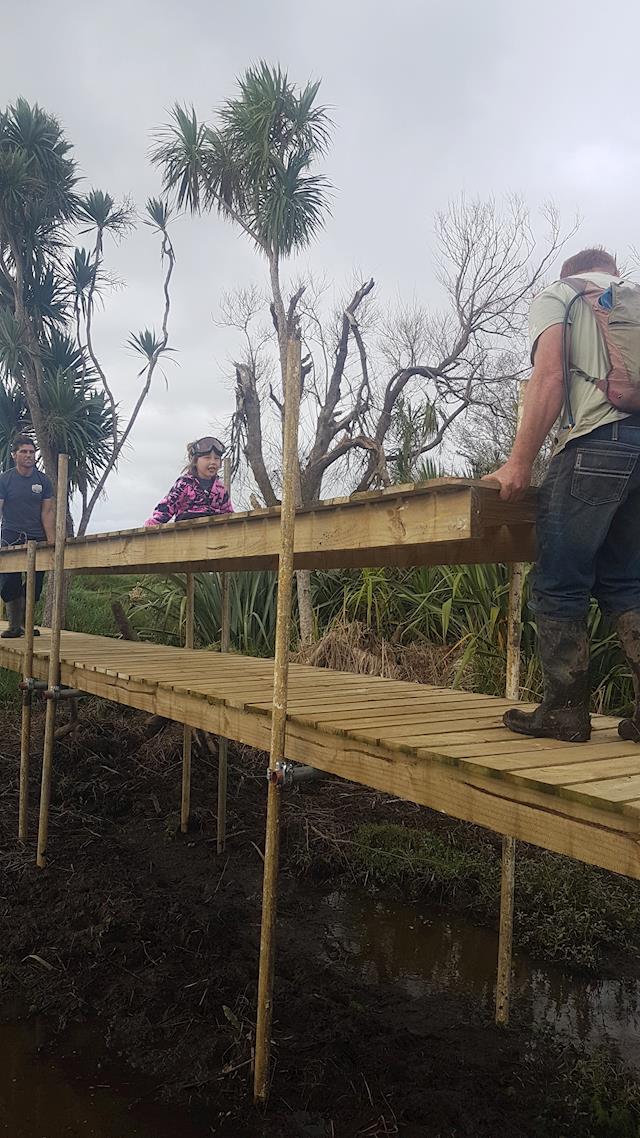
Princess Maia giving us a helping hand as we install another boardwalk ... check out the Gallery to see some more heavy lifting
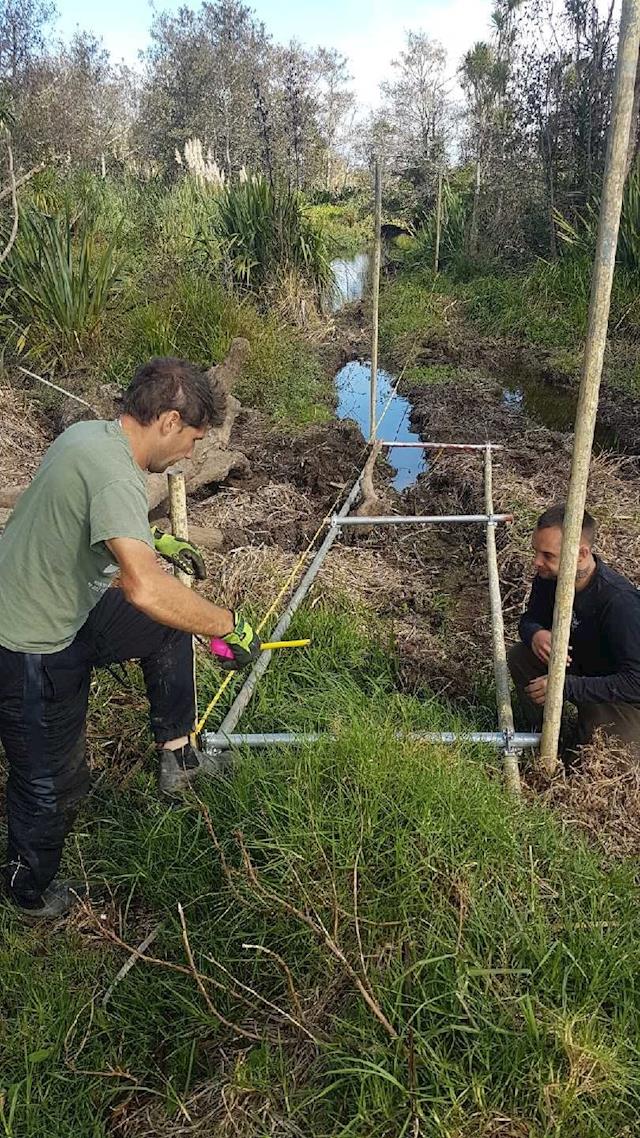
Continuing to install boardwalks to make access easier for the community to enjoy the wetlands
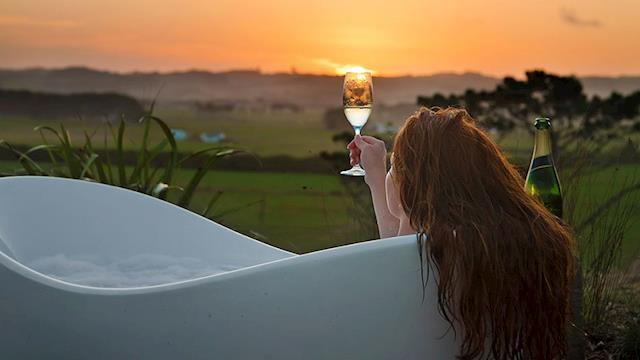
Farm tourism is one way we can help
improve both the public’s understanding of dairy and allow people to share our environment. It gives non-farmers an insight into dairying and country life, and lets them see first-hand how we, as farmers, care for our environment and animals.
Te Papa Eco Cottage has been open for 18 months and runs on solar power. Guests staying in whitebait season can use the gas cooktop to whip up a batch of fritters. The whitebait are now plentiful in the river below thanks to considerable environmental work, which includes 20- plus whitebait spawning ponds.
We carry out ongoing pest and weed eradication, plus extensive planting of mostly native species.
To read the full article search:
https://www.dairynz.co.nz/news/latest-news/opening-our-farm-gates/
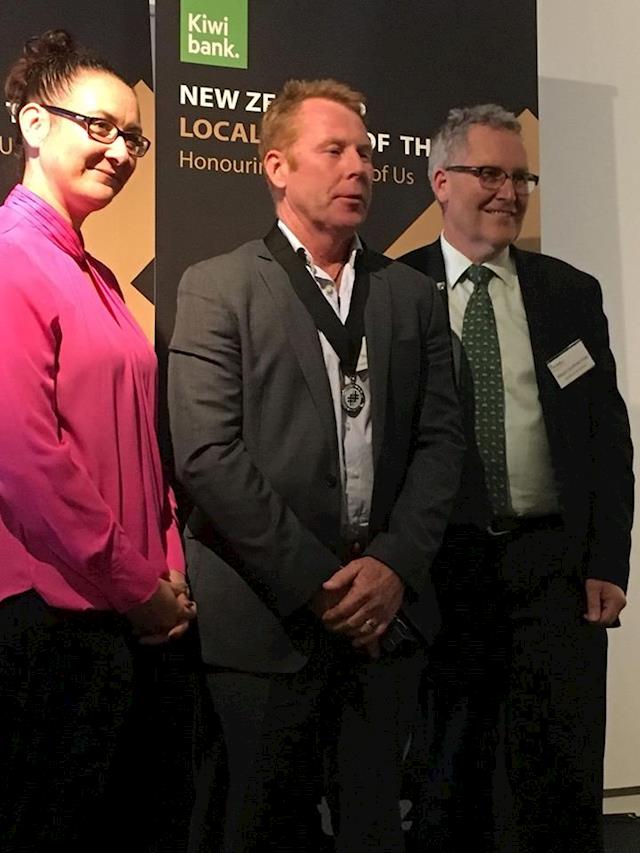
Honoured to receive this recognition from the community for the work we have been doing here in the wetland.
Search for this article for more information: https://www.thepost.nz/articles/stus-selfless-work-recognised/

Great to have our local school helping out with some riparian planting last week.
Search for this article for more information: https://www.thepost.nz/articles/aka-aka-students-planting-for-the-future/
Last weekend we got a major buy in from our local community. With the Franklin Acclimatisation Society we distributed bait for 500 stations along the Lower Waikato River Delta. The next stage is to give away 300 more stations to continue the eradication of rats, possums and mustelids from all the islands from the mouth of the Waikato river to the Tuakau bridge.
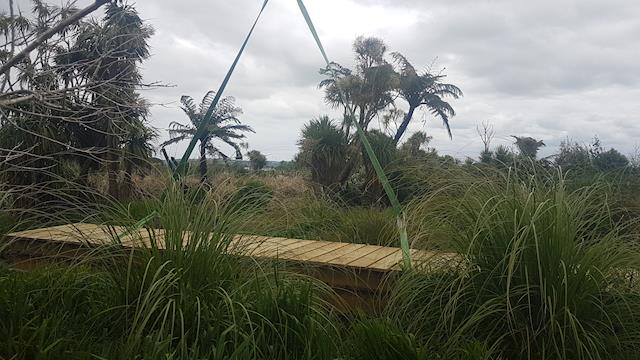
Just flown the next stage of boardwalks into the restoration site. We hope to put another significant length in, joining the river to the bank, so schools, community groups, iwi and others can reconnect to the river and wetland restoration project.
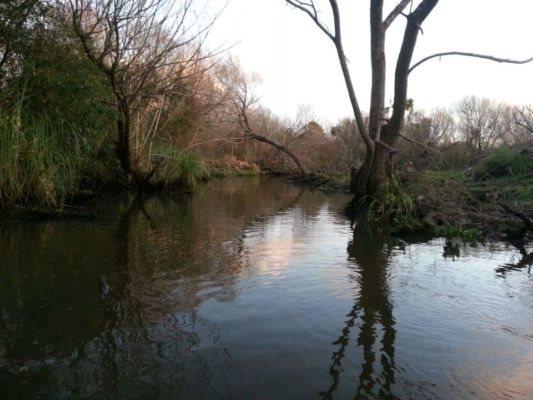
Stu Muir brings life to dying wetlands
Kate GuthrieFebruary 5, 2017Farmers, Profiles, Volunteers
STU MUIR.
Stu Muir is a Waikato dairy farmer and, in contrast to some of the headline-grabbing stories you may have read about dairy farmers, Stu and his family are putting a huge effort into restoring natural waterways on their block. Such is the magnitude of their effort and the success of their project,that they even featured on the 50th Anniversary episode of ‘Country Calendar’.
Stu’s family have been farming in New Zealand since the 1850s. On a block of land his great great grandparents
bought back in the 1890s, there is a swamp and until recently that swamp was clogged with willows and pampas – so badly blocked that you couldn’t move through the stream. Water couldn’t move either and with no current flowing through the wetland was full of pondweed and dead or dying throughout.
“It was a stagnant cesspool,” says Stu, “no flow at all, just tidal in and out.”
MANGATI CREEK, CLOGGED WITH WILLOW AND PONDWEED BEFORE RESTORATION.
The stream that ought to be flowing through the wetland was a stagnant tributary of the Waikato River, blocked since some time back in the 1920s when the Awapuni Dam released silt that blocked all the natural streams. Then 5 or 6 years ago, Stu brought in the heavy machinery.
“First we aerially sprayed the willows,” says Stu, “then when they died back we used a chainsaw and digger to remove them.”
MANGATI CREEK AFTER THE WILLOWS WERE CLEARED.
The current blew out the silt and opened the waterways again. With water flowing properly for the first time in perhaps a century, Stu set about creating 20 whitebait spawning ponds with grasses, flaxes, kahikatia,kowhai, mahoe and other wetland trees. With the help of a grant from the Waikato River Authority (a joint Iwi and crown organisation set up to clean up the Waikato river and its tributaries), he planted around 40,000 plants in the wetlands, along with another 8,500 plants at a fenced off sand dune lake on another family property.
He also started doing pest control over a 400 ha area. A huge number of volunteer hours were involved.
“I had to employ another full-time person on the farm so that I could do it,” admits Stu.
Rats and possums are targeted with baits while Stu uses DOC 200 traps for stoats and ferrets.
“We’ve trapped about 200 stoats, ferrets and weasels so far,” says Stu, “plus all the by-kill from stoats eating poisoned rats. Pest control is a major component of the restoration.”
THE TE PAPA PLANTING AT LOW TIDE.
Stu changes the bait over the duck-shooting season though, so that he doesn’t end up accidentally poisoning dogs. Good relations with the wider community are an important aspect of the project and everything has been done in consultation with his neighbours.
“The family land borders Fish & Game, DOC and Maori land. I’m doing my own thing, but with their approval and backing,” he explains.
On the home farm there are now kereru, tuis and the occasional Kaka and Kotuku..
“There were never tuis at the swamp,” says Stu, “But now they’re back in big numbers. They’re even roosting down there.”
Intrigued by the sight of tuis roosting in the wetlands, Stu asked the guys at DOC about it. It meant, they told him, that the tuis were feeling secure. They weren’t getting molested at night by rats and possums – a visible endorsement of his trapping efforts.
A VISITING SCHOOL GROUP SETS OUT TO EXPLORE THE RESTORED WETLANDS.
Bitterns are also living in the wetland – and were there, even before the restoration. Numbers seem about the same, at the moment, Stu reckons, but he’s hoping the restoration will lead to greater bittern and fernbird numbers in the longterm.
“In the whitebait season the bitterns boom everywhere. We’re used to it, but scientists are amazed.”
In the next few months Stu will be building about $20,000 worth of boardwalks through the wetlands, so that he can extend the educational role of the wetland – and hopefully narrow the urban/rural divide – by hosting visits by local school groups. But he won’t be building the boardwalks on his own.
“A number of ‘at risk’ youth from the Educational Trust will be helping,” says Stu. “If they do the work, they can go catch some whitebait afterwards.”
Longterm plans include a bridge which is also needed to make the wetland more accessible to visiting groups. Stu’s set up a ‘Give-a-little’ page to help fund that project.
THE VIEW OVER THE RESTORED WETLAND FROM TE PAPA ECO COTTAGE.
Additional funding for wetland projects comes from ‘Te Papa Eco Cottage’ – an off-grid luxury bed & breakfast cottage on the farm, set above the wetland with awesome evening views. There’s even an outdoor bath! Stu puts 15% of all ‘Te Papa Eco Cottage’ profits towards the wetland restoration.
One day the wetland will be put under covenant.
“That’s the longterm goal,” says Stu, “once the wetland is maintaining itself and the job is done.”
Sign up to our newsletter
Stu Muir brings life to dying wetlands
http://predatorfreenz.org/stu-muir-brings-life-dying-wetlands/
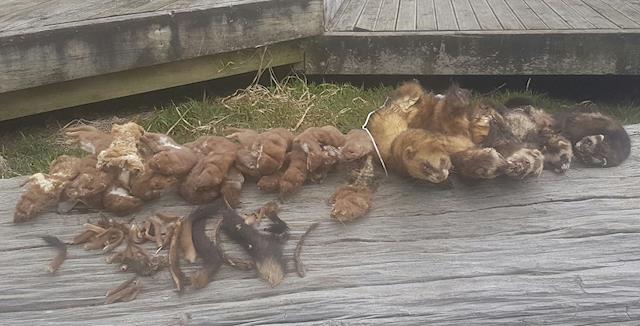
A milestone of a mix of 200 ferrets, stoats and weasels have been caught so far. This doesn't include the bykill from poisoning rats and possums as well.
Unfortunately our efforts are extremely limited due to the lack of access.
So thanks to all that have contributed to our project so far.

Te Papa before restoration, choked by willows, glyceria and pampas
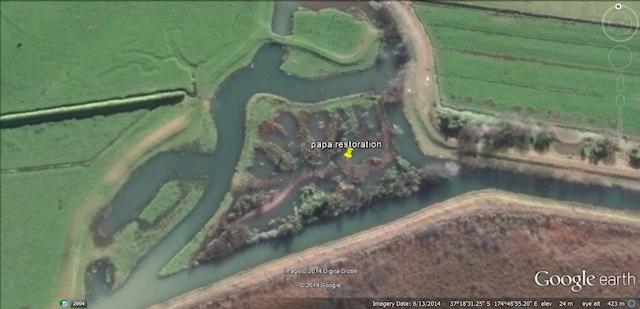
A view of the first part of our restoration project.
This was just on a small scale compared to what we have continued to do. You can see the transformation with the tidal spawning ponds, thousands of native plants for the rare Bittern and Mataku to live and breed in
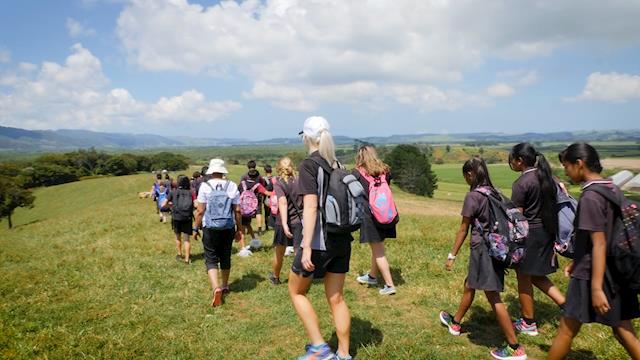
Giving students a hands on experience of our farm and environmental restoration project
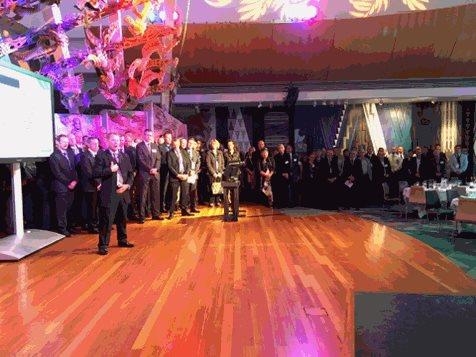
Replying to Ngati Toa Rangatira (in te reo ) at Te Papa on behalf of Environmental Leaders, cross party politicians and distinguished guests
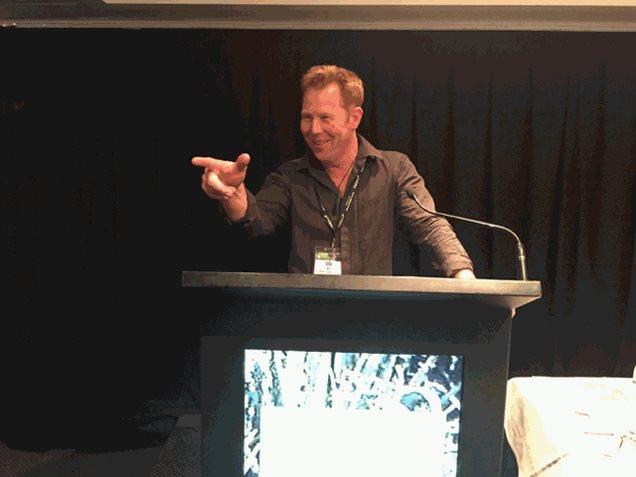
I just spent 3 days in Wellington at the Dairy NZ Environmental leaders forum. Listened to many inspirational speakers like Gilbert Enoka and Theresa Gatung. I spoke on community involvement and collaboration. The importance of Vision, strategy and most importantly Why we are doing what we are doing. To create longterm sustainable improvement to our environment we need to educate our youth who in turn influence their parents and community to create change. Taking individual and collective responsibility great things can be achieved.
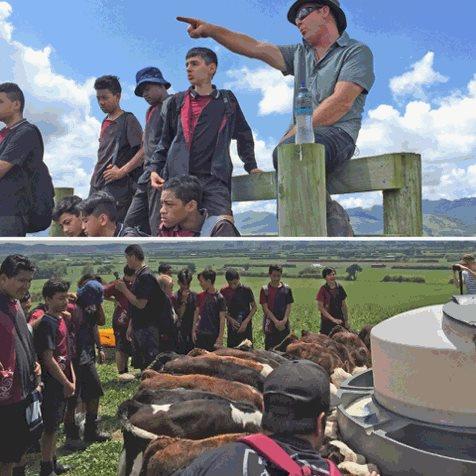
We were privileged to host Manurewa intermediate on our farm to educate them about our wetland restoration project and help Bridge the rural urban divide. Many had never been in the bush before let alone a living wetland
Great kids great day. MAURI ORA!